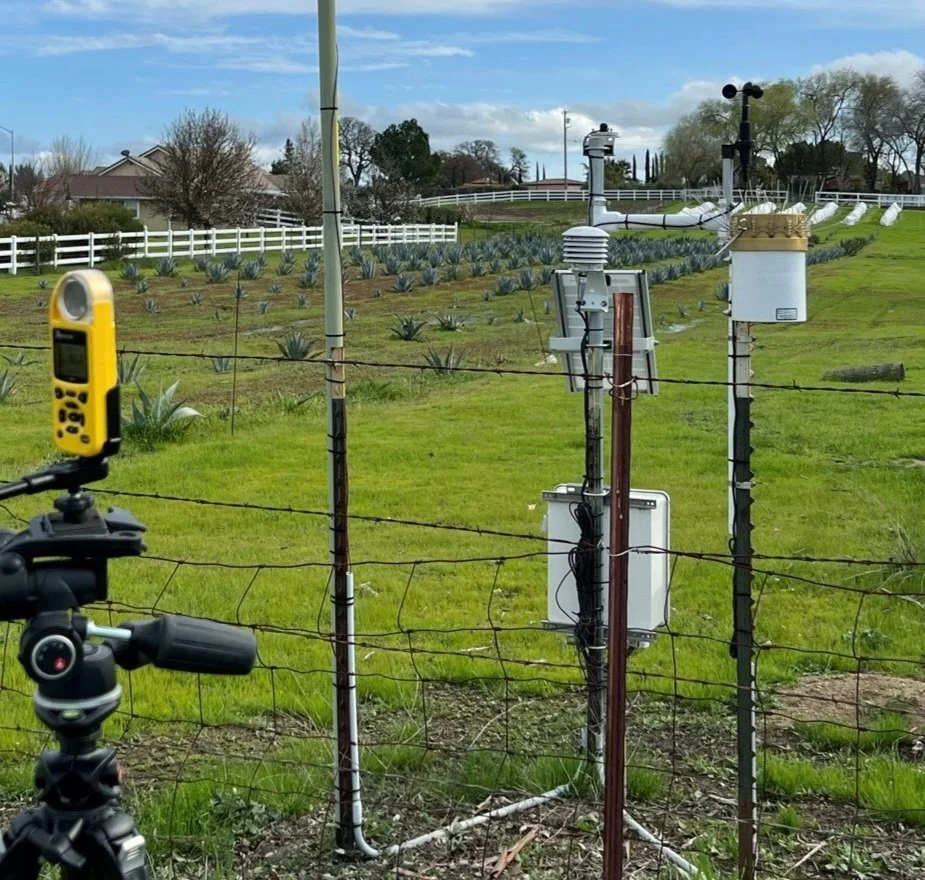In Vino IoT
A picture of my portable weather station (yellow) working next to a professional one in Paso Robles wine country. This is a part of an exploration to apply IoT ideas to practice, in this case its uses in viticulture. This specific experiment is part of an effort to assess the feasibility of conducting informal spot checks of micro-climate variations.
Computer analyses of local weather conditions provide data-driven insights to inform the decision making of vineyard managers. These include calculations of grape growing days to indicate key stages of vine development, predictions of frost and conditions for pest development to advise timing of treatments, irrigation control. All of these contribute to more efficient farming, reduced use of pesticides and water, and improved sustainability. If micro-climate variations in vineyards and their blocks are significant, this would further argue for the benefits of deploying IoT in viticulture. Starter kits typically include one or more weather stations and connected sensors to measure and record local ambient and soil conditions for analyses and AI-aided predictions.
I recently stumbled upon a useful data source to assess the significance of local data and the magnitude of variations in a grape-growing area. It is provided by a network of 20 professional-grade weather stations, like the multi-component one pictured above. They are installed within an area of approximately 40 miles (64.3 km) around Paso Robles, California that is home to over 200 wineries. Each station measures temperature (with radiation shield), humidity, rain fall, wind speed, and records extremes of interest. An uncommon feature is a second temperature sensor mounted on a 30 ft pole (part of which can be seen in the picture) to indicate temperature inversion compared to the customary unit at 5 ft. Station locations and their customizable current and historical data reports are available at https://ucce-slo.westernweathergroup.com. For comparison, the US National Weather Service operates only one reporting station in the same area.
The network is operated by the University of California Cooperative Extension (UCCE) in conjunction with the San Luis Obispo county. The UCCE employs a number of expert farm advisors working with local counties to act as a link between UC research and farmers.
